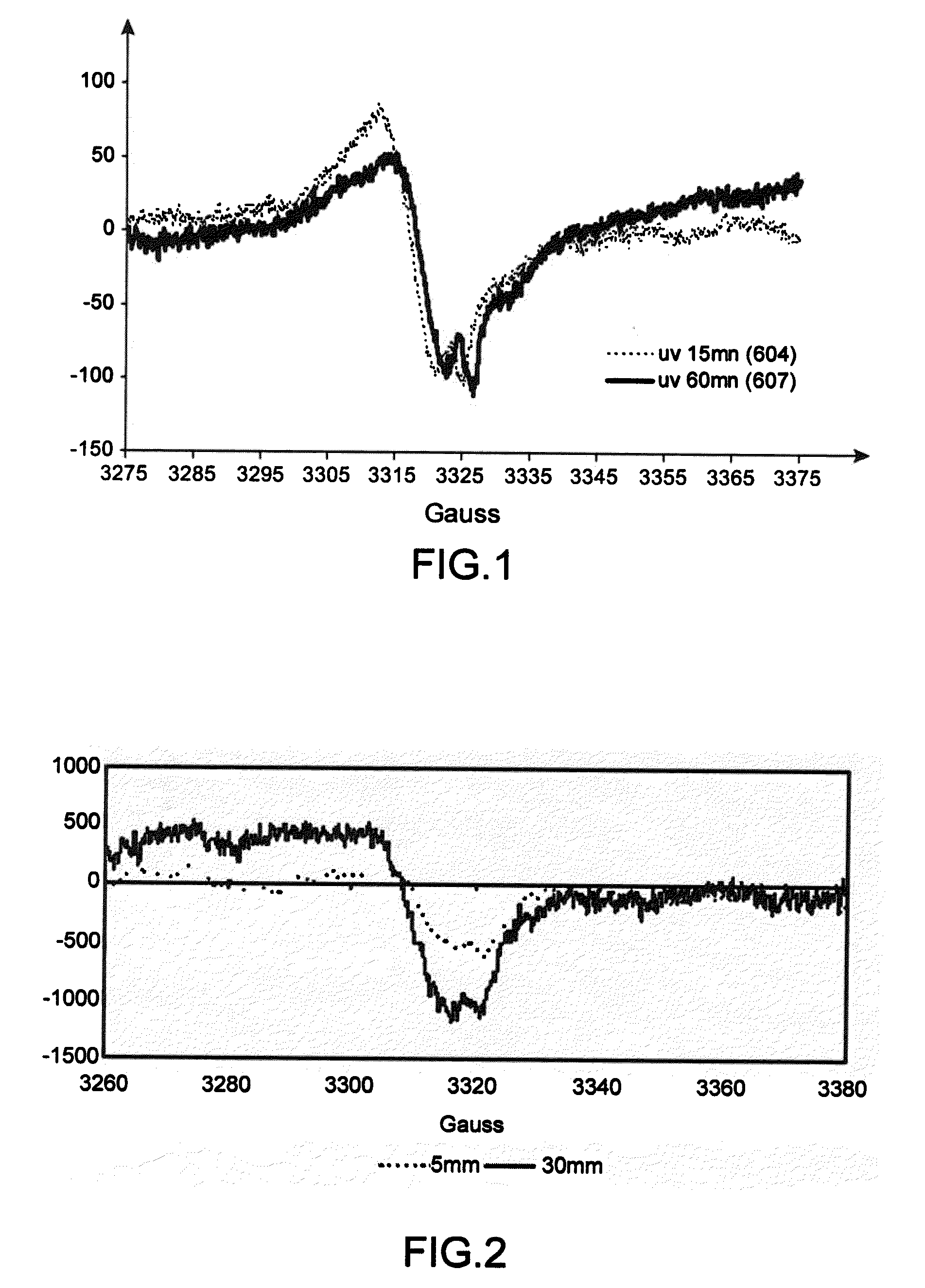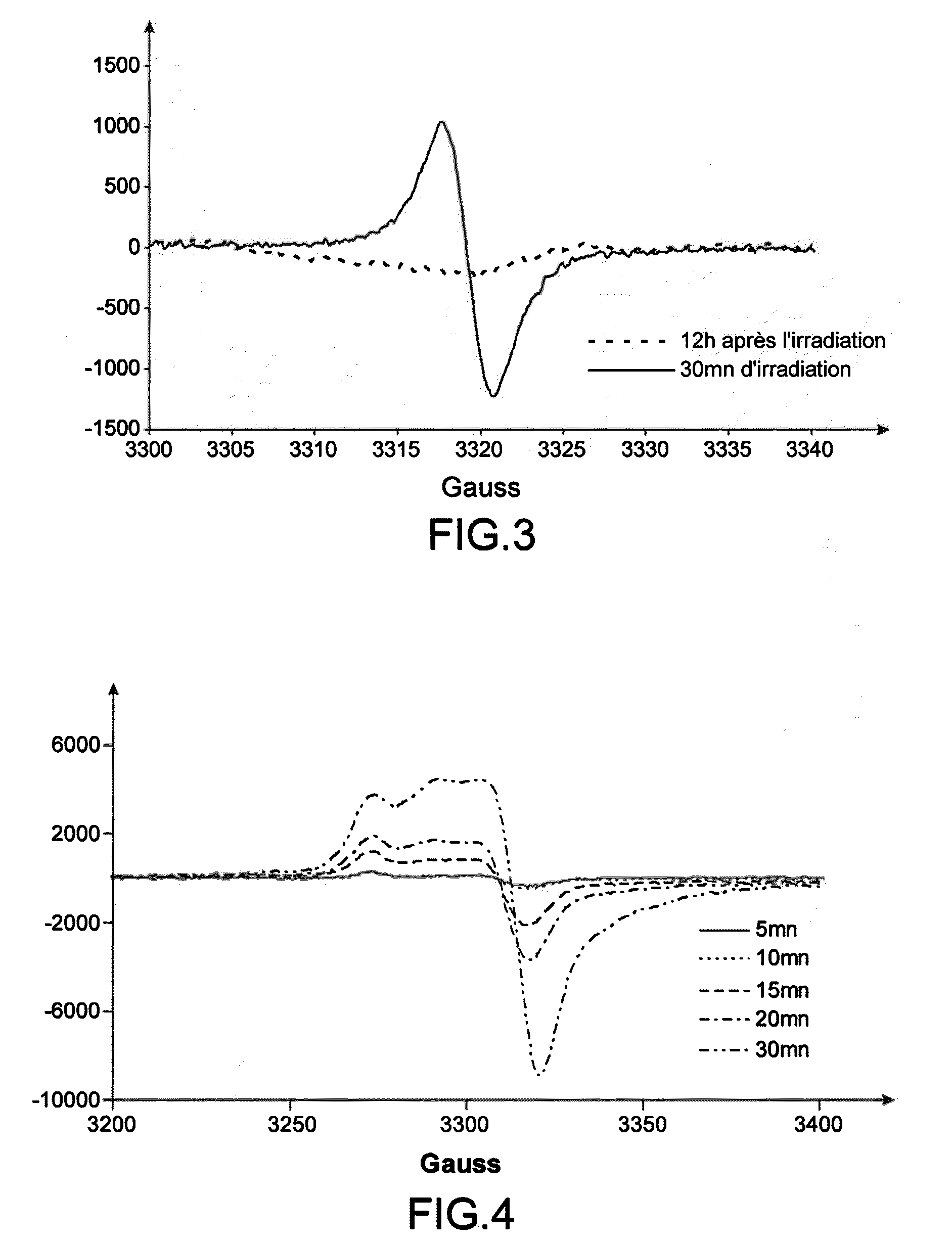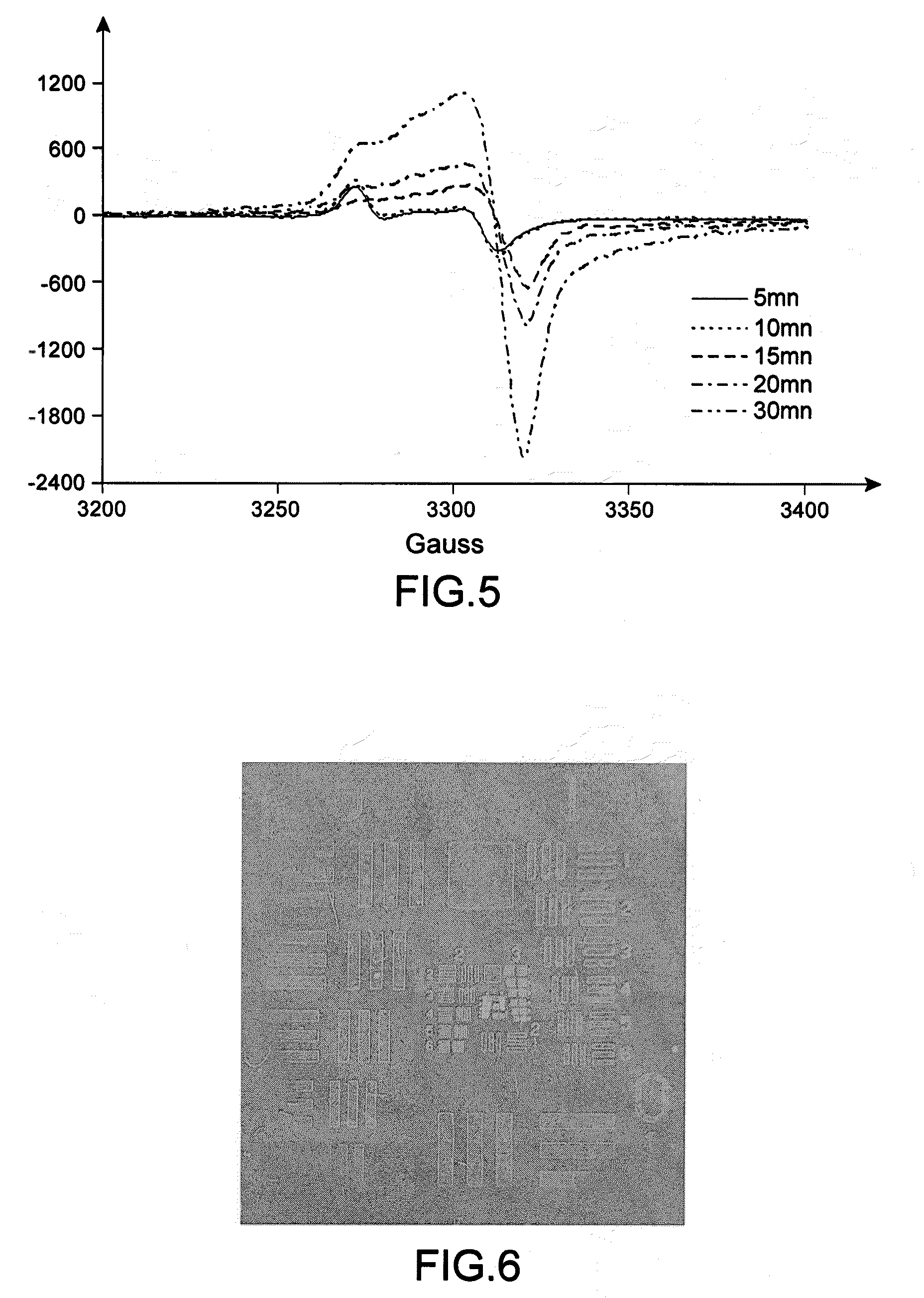Chemical modification process for a deep polymeric matrix
- Summary
- Abstract
- Description
- Claims
- Application Information
AI Technical Summary
Benefits of technology
Problems solved by technology
Method used
Image
Examples
Embodiment Construction
A. Materials and Methods
[0125]EPR: The EPR spectra are obtained with an X-band Bruker ESP300E machine operating at a frequency of 9.420 GHz at ambient temperature with a field modulation of 100 kHz and an amplitude modulation of 3 Gauss. All the spectra are normalized to a 100 mg sample and for a gain of 10 E4.
[0126]Laser: The laser irradiations are carried out with an INDI Nd:YAG pulsed laser (Spectra Physics) operating at 266 nm. The duration of each pulse is 8 ns and the pulse repetition frequency is 10 Hz. The final diameter of the laser beam is 8 mm and the energy delivered per pulse is of the order of 2 mJ.
[0127]V-UV: The samples are irradiated using a xenon excimer lamp, the power of which over the whole of the surface is 15 W. The V-UV light has a pulse repetition frequency of 30 kHz and the duration of each pulse is 4 μs.
[0128]UV: The Omnicure Series 2000 lamp is used to irradiate the samples with UV radiation. Having a total power of 200 W, it emits from 320 to 500 nm. It ...
PUM
| Property | Measurement | Unit |
|---|---|---|
| Thickness | aaaaa | aaaaa |
| Wavelength | aaaaa | aaaaa |
| Fraction | aaaaa | aaaaa |
Abstract
Description
Claims
Application Information
 Login to View More
Login to View More - R&D
- Intellectual Property
- Life Sciences
- Materials
- Tech Scout
- Unparalleled Data Quality
- Higher Quality Content
- 60% Fewer Hallucinations
Browse by: Latest US Patents, China's latest patents, Technical Efficacy Thesaurus, Application Domain, Technology Topic, Popular Technical Reports.
© 2025 PatSnap. All rights reserved.Legal|Privacy policy|Modern Slavery Act Transparency Statement|Sitemap|About US| Contact US: help@patsnap.com



